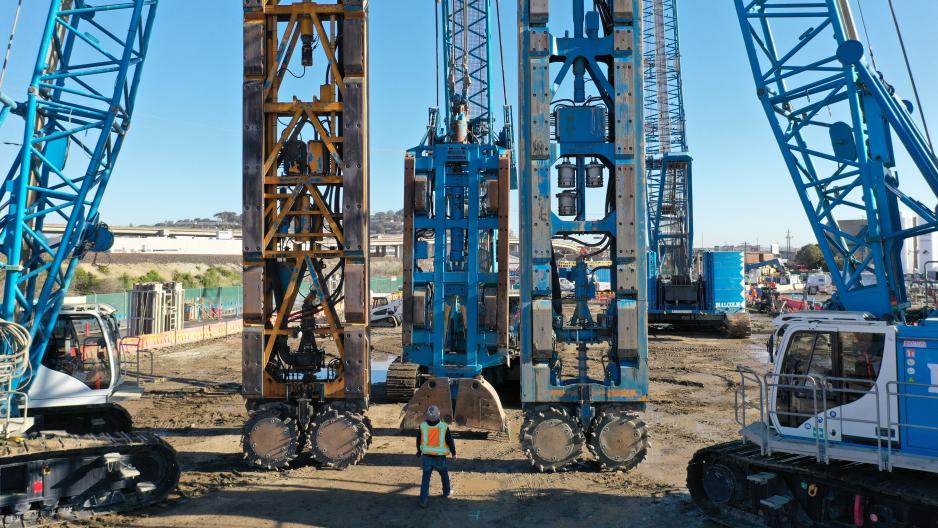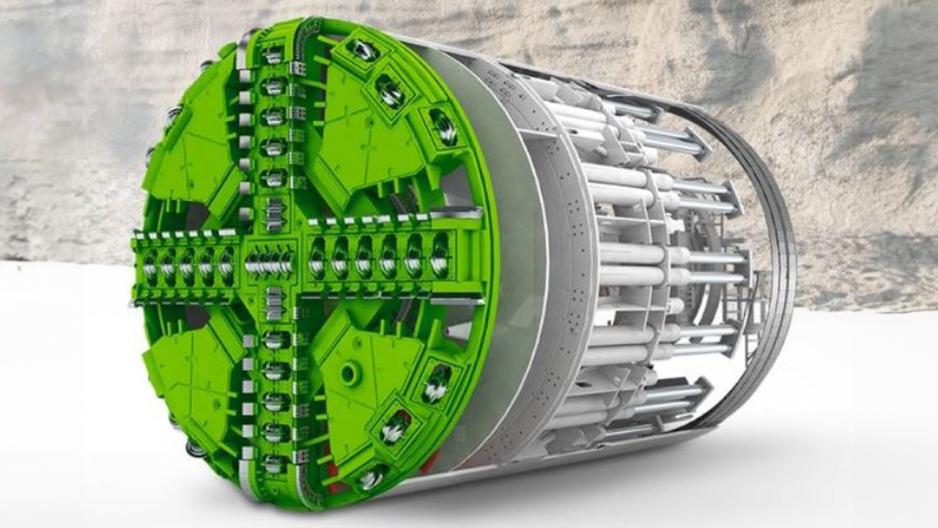As with VTA’s BART Phase I, there is a sequence of activities that must take place before passenger service can begin. While Phase II of the 16-mile extension has completed the planning and environmental phases, the final design, construction, and testing must still be completed.
The project is designed and will be built to meet the rigorous requirements of state and federal regulatory agencies and the unique requirements of the final operator, BART. The physical structures (stations and tracks), power source, and communications need to be built and fully operational before extensive testing and verification can take place. Once the system passes VTA’s tests, it is handed over to BART for their own testing and integration with the regional system. Only at that stage can passenger service begin.
Contract Packages
Delivering a megaproject to connect the region requires extensive construction and coordination. Construction of the Project has been broken out into smaller packages to allow for some portions of construction to advance while design is still being finalized for other parts. Phasing construction like this increases efficiency as it helps specialized contractors work while others finalize the plans for the next stage.
The tunnel and trackwork for the 5-mile-long, single bore tunnel—along with the initial site preparation for each work area—will be constructed under contract package 2 (CP2). The four stations and maintenance yard will be constructed under Station contract packages 3 (CP3) and 4 (CP4). The key systems required for BART passenger operations (Guideway Systems and Facility Systems) will be constructed under contract package 1 (CP1). More information on the different contract packages can be found on the Contract Packages page.
Tunnel and Trackwork (CP2)
The Tunnel and Trackwork contract (CP2) includes work at each station area of the project, starting with excavation of the tunnel at West Portal until exiting at East Portal. Along this path, the contract package will also include preparing the Tunnel Boring Machine (TBM) launch and exit site, ordering and assembling the TBM itself, and excavating and connecting any additional facilities to the tunnel. In May 2022, VTA awarded the Tunnel and Trackwork contract (CP2) to the joint venture of Kiewit Shea Traylor (KST).
The construction activities will take place across two major phases: Early Works Construction and Tunneling and Ongoing Construction (sometimes referred to as Major Construction).
Early Works Construction
Early Works Construction prepares the site for tunneling and generally includes utility relocations, site preparation, demolition (e.g., building, pavement, and other site features), and soil testing at most work areas. These early works construction activities are key to ensuring that the tunneling and ongoing construction of the future stations can proceed on time. Early Works Construction is less likely to need longer working hours and weekend work than other project phases; however, the construction requirements will ultimately set the work hours.
View the Newhall Yard and West Portal Construction Page to review Early Works Construction activities in detail. As more details are available for each project work area, the construction page will be updated.
Tunneling and Ongoing Construction
Tunneling and Ongoing Construction will enable the tunnel to be outfitted with the tracks and platforms that will connect to the stations and ancillary facilities at the surface. At the West Portal, this will include launching the use of the Tunnel Boring Machine (TBM). At the stations, this phase includes digging, or excavating, the deep shafts for the primary station buildings as any additional facilities like ventilation and emergency egress. This phase also includes mining the underground connections, called adits, between these shafts and tunnel. Activities like excavation typically need longer or extended working hours including weekends, as safety requirements dictate that deep excavations must be filled as quickly as possible.
Once the shafts have been excavated, the station work area will be handed over to the Stations Contractor (CP3 and CP4) to build out the facilities. This phase will implement vertical circulation (e.g., staircases, escalators, and elevators), construct the aboveground structure of the station, apply architectural finishes, and more. Construction at each station will likely begin at a different time based on when the TBM travels through that work area. Once the stations and tunnel are constructed, the Systems Contractor will install the systems and conduct testing (CP1). The Phase II Extension should open at the same time. As more details are available on the various construction packages, this page will be updated.
Image of TBM cutter head.
As with VTA’s BART Phase I, there is a sequence of activities that must take place before passenger service can begin. While Phase II of the 16-mile extension has completed the planning and environmental phases, the final design, construction, and testing must still be completed.
The project is designed and will be built to meet the rigorous requirements of state and federal regulatory agencies and the unique requirements of the final operator, BART. The physical structures (stations and tracks), power source, and communications need to be built and fully operational before extensive testing and verification can take place. Once the system passes VTA’s tests, it is handed over to BART for their own testing and integration with the regional system. Only at that stage can passenger service begin.
Contract Packages
Delivering a megaproject to connect the region requires extensive construction and coordination. Construction of the Project has been broken out into smaller packages to allow for some portions of construction to advance while design is still being finalized for other parts. Phasing construction like this increases efficiency as it helps specialized contractors work while others finalize the plans for the next stage.
The tunnel and trackwork for the 5-mile-long, single bore tunnel—along with the initial site preparation for each work area—will be constructed under contract package 2 (CP2). The four stations and maintenance yard will be constructed under Station contract packages 3 (CP3) and 4 (CP4). The key systems required for BART passenger operations (Guideway Systems and Facility Systems) will be constructed under contract package 1 (CP1). More information on the different contract packages can be found on the Contract Packages page.
Tunnel and Trackwork (CP2)
The Tunnel and Trackwork contract (CP2) includes work at each station area of the project, starting with excavation of the tunnel at West Portal until exiting at East Portal. Along this path, the contract package will also include preparing the Tunnel Boring Machine (TBM) launch and exit site, ordering and assembling the TBM itself, and excavating and connecting any additional facilities to the tunnel. In May 2022, VTA awarded the Tunnel and Trackwork contract (CP2) to the joint venture of Kiewit Shea Traylor (KST).
The construction activities will take place across two major phases: Early Works Construction and Tunneling and Ongoing Construction (sometimes referred to as Major Construction).
Early Works Construction
Early Works Construction prepares the site for tunneling and generally includes utility relocations, site preparation, demolition (e.g., building, pavement, and other site features), and soil testing at most work areas. These early works construction activities are key to ensuring that the tunneling and ongoing construction of the future stations can proceed on time. Early Works Construction is less likely to need longer working hours and weekend work than other project phases; however, the construction requirements will ultimately set the work hours.
View the Newhall Yard and West Portal Construction Page to review Early Works Construction activities in detail. As more details are available for each project work area, the construction page will be updated.
Tunneling and Ongoing Construction
Tunneling and Ongoing Construction will enable the tunnel to be outfitted with the tracks and platforms that will connect to the stations and ancillary facilities at the surface. At the West Portal, this will include launching the use of the Tunnel Boring Machine (TBM). At the stations, this phase includes digging, or excavating, the deep shafts for the primary station buildings as any additional facilities like ventilation and emergency egress. This phase also includes mining the underground connections, called adits, between these shafts and tunnel. Activities like excavation typically need longer or extended working hours including weekends, as safety requirements dictate that deep excavations must be filled as quickly as possible.
Once the shafts have been excavated, the station work area will be handed over to the Stations Contractor (CP3 and CP4) to build out the facilities. This phase will implement vertical circulation (e.g., staircases, escalators, and elevators), construct the aboveground structure of the station, apply architectural finishes, and more. Construction at each station will likely begin at a different time based on when the TBM travels through that work area. Once the stations and tunnel are constructed, the Systems Contractor will install the systems and conduct testing (CP1). The Phase II Extension should open at the same time. As more details are available on the various construction packages, this page will be updated.
Image of TBM cutter head.


